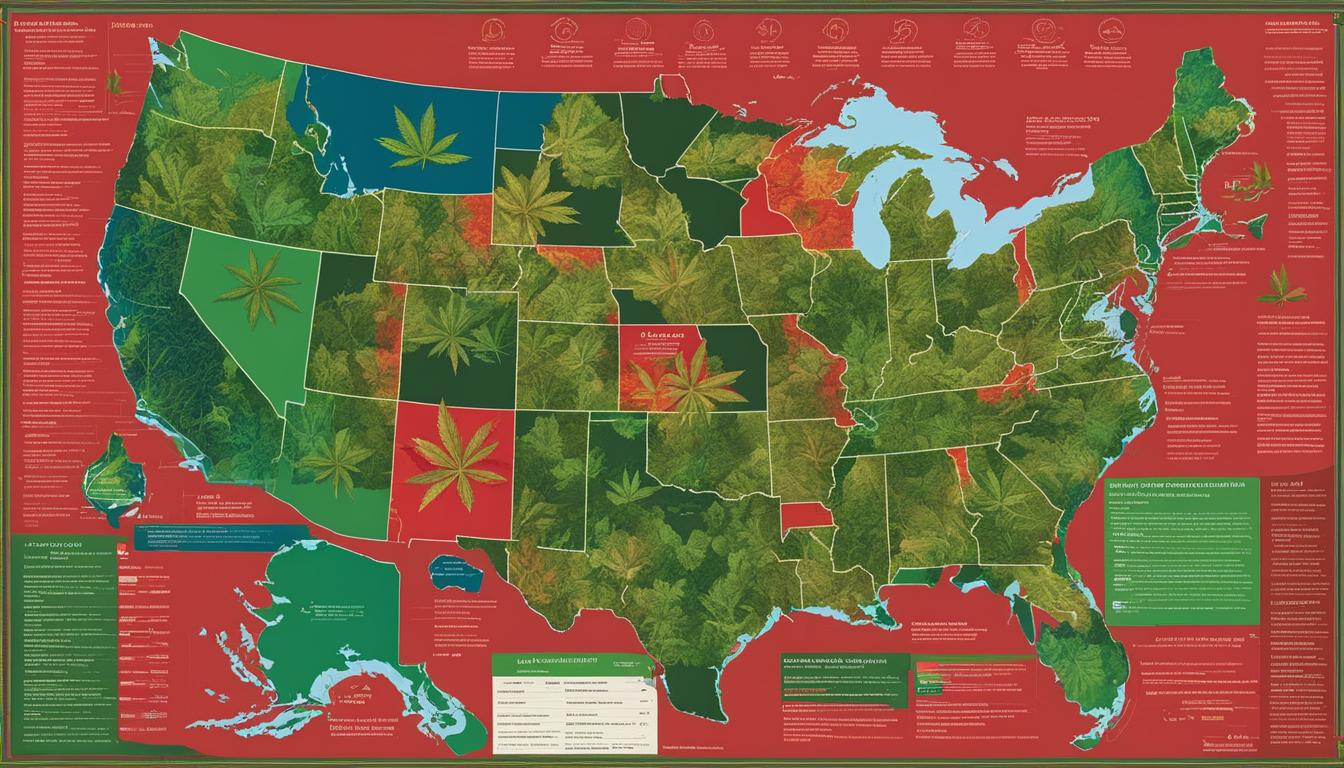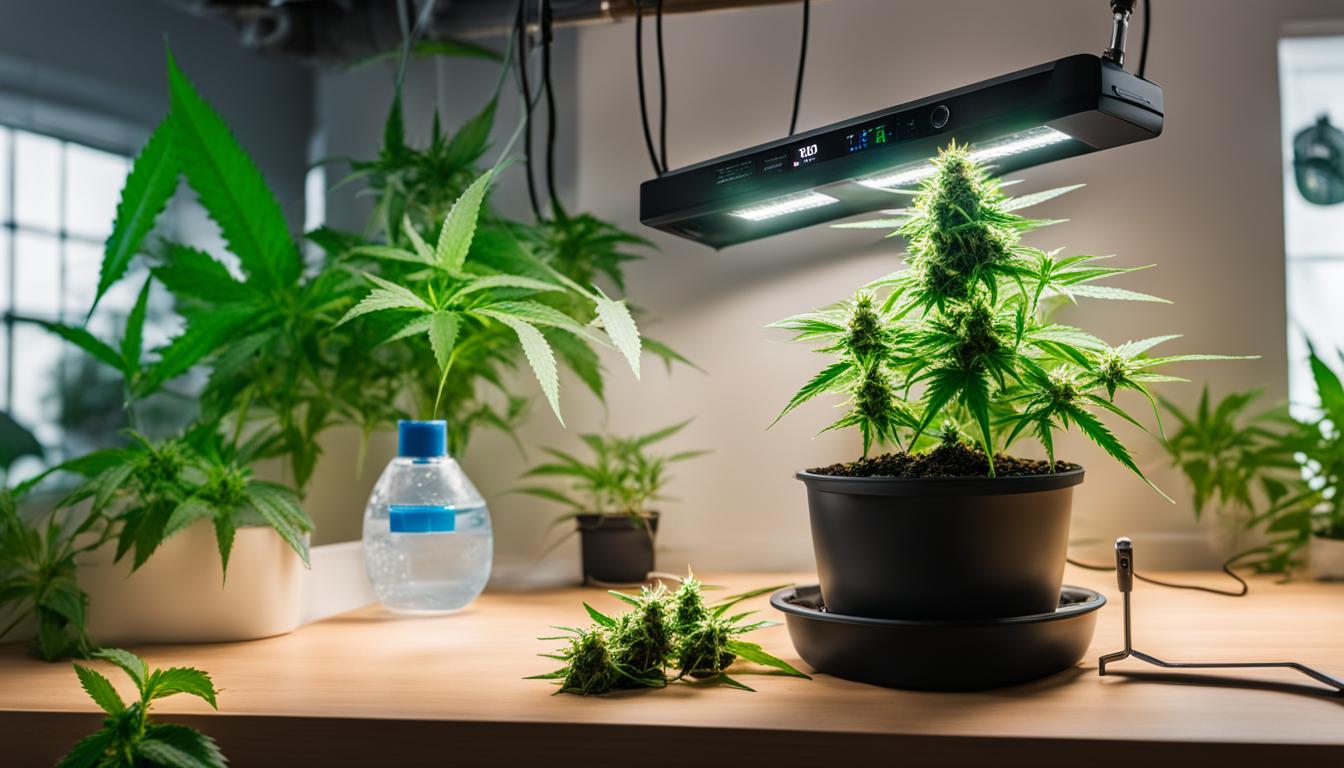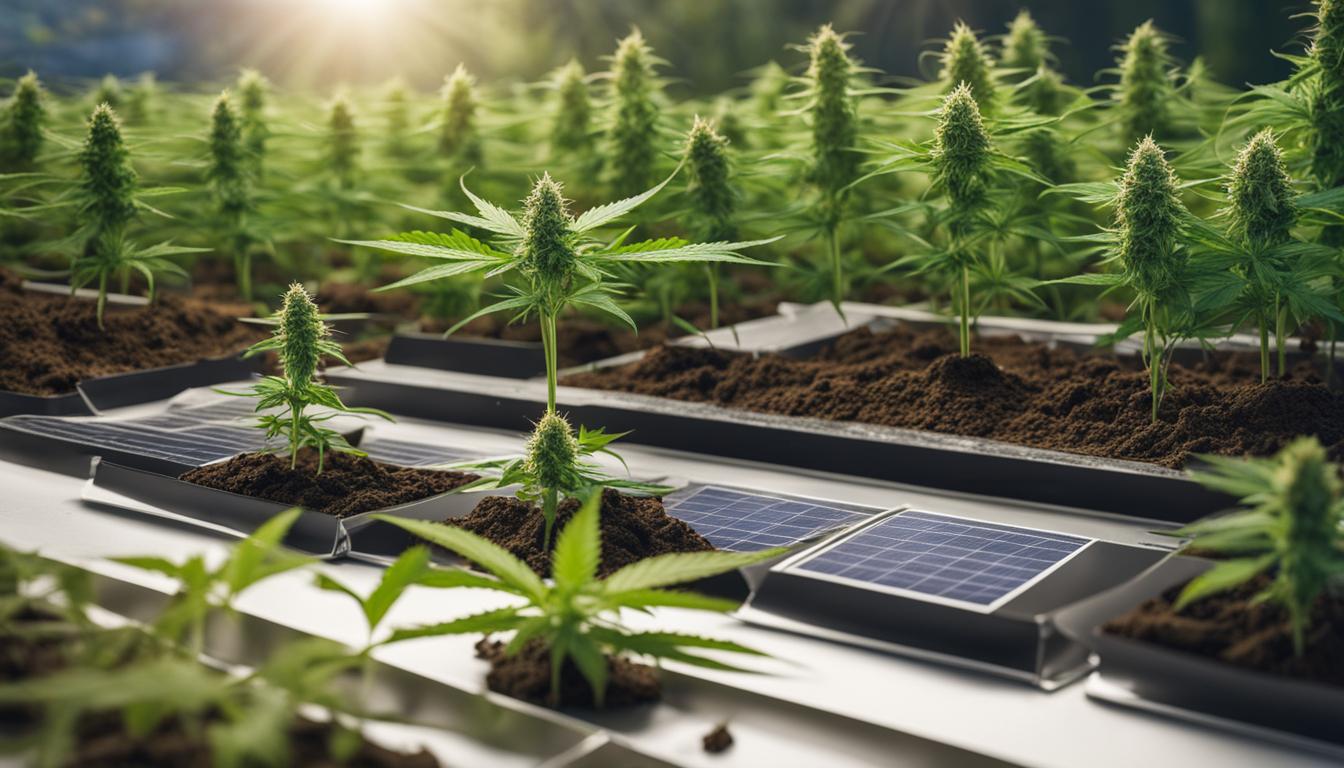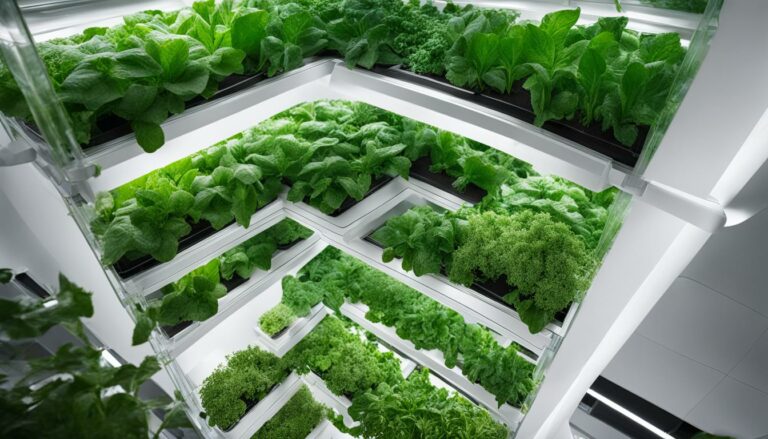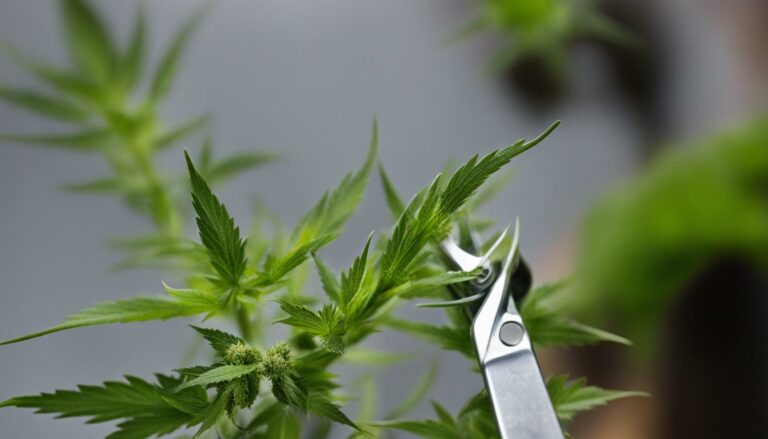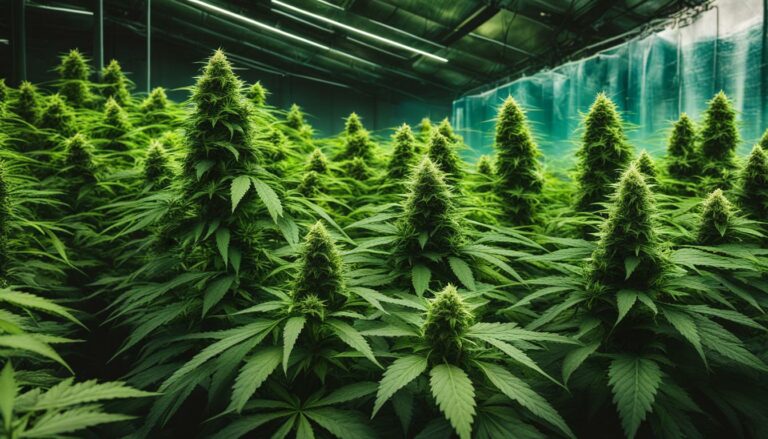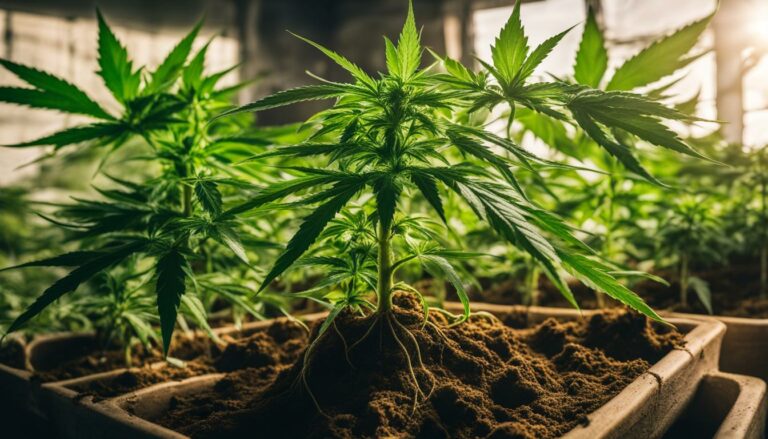The Legal Landscape of Home Cannabis Cultivation
Welcome to our article on the legal landscape of home cannabis cultivation in the United Kingdom. In this comprehensive guide, we will explore the regulations and guidelines surrounding cannabis cultivation laws and the legal requirements for growing cannabis. As the cannabis industry continues to evolve, it is crucial to stay informed about the ever-changing cannabis regulations to ensure compliance and understand the rights and responsibilities of home cultivators.
Home Cultivation Laws in the United States
In the United States, cannabis cultivation laws vary by state, with each state having its own regulations and guidelines. It is essential for individuals to understand and comply with these laws to ensure compliance and avoid legal consequences. Compliance with cannabis cultivation regulations requires knowledge of the specific laws in each state, including restrictions on the number of plants allowed, cultivation location requirements, and security measures.
Cannabis cultivation laws in the United States can differ significantly between states. Some states allow home cultivation for both medical and adult-use purposes, while others only permit it for medical purposes. Additionally, the number of plants allowed for cultivation can vary from state to state, ranging from a limited number to no restrictions.
Compliance with these regulations is crucial to prevent legal issues related to cannabis cultivation. It is important for individuals to familiarize themselves with the laws in their state and understand any restrictions or requirements to ensure compliance.
To illustrate the variation in cannabis cultivation laws, here is a table comparing the regulations in three representative states:
| State | Medical Cultivation | Adult-Use Cultivation | Restrictions |
|---|---|---|---|
| California | Allowed | Allowed | No plant limits; security measures required |
| Colorado | Allowed | Allowed | Up to 12 plants per household for medical cultivation; up to 6 plants per adult for adult-use cultivation |
| Texas | Not allowed | Not allowed | Restrictive laws, no home cultivation permitted |
As illustrated in the table, California allows both medical and adult-use home cultivation with no plant limits but requires security measures. In contrast, Colorado imposes plant limits for both medical and adult-use cultivation. Texas, on the other hand, does not permit any form of home cannabis cultivation.
Understanding and complying with cannabis cultivation laws by state is vital for individuals who wish to cultivate cannabis at home. It is recommended to consult the specific regulations in their state and seek legal advice if needed to ensure compliance and avoid any legal issues.
The Benefits of Home Cannabis Cultivation
Home cannabis cultivation offers numerous advantages for individuals interested in growing their own cannabis. Whether for personal use or medical purposes, cultivating cannabis at home provides numerous benefits that contribute to a more accessible and personalized cannabis experience.
One of the primary benefits of home cannabis cultivation is the ability to access affordable and high-quality cannabis. By growing their own cannabis, individuals can save money and ensure that they have a steady supply of their preferred strains. This is especially beneficial for medical cannabis patients who may rely on specific strains for their therapeutic needs.
Moreover, home cultivation allows individuals to have complete control over the cultivation process. They can choose the cultivation methods and techniques that suit their preferences and desired outcome. From selecting the strains to deciding on the nutrients and growing conditions, home cultivation provides a personalized experience that fosters a deeper connection with the plant.
In order to engage in home cannabis cultivation, it is essential to obtain the necessary permits or licenses to ensure compliance with the law. These permits or licenses vary by jurisdiction and may include requirements such as registration, plant limits, and security measures. By obtaining the proper documentation, individuals can cultivate cannabis at home in a legal and responsible manner.
Benefits of Home Cannabis Cultivation:
- Access to affordable and high-quality cannabis
- Control over the cultivation process and preferred strains
- Personalized experience and connection with the plant
- Obtaining permits or licenses for legal compliance
Home cannabis cultivation empowers individuals to take charge of their cannabis experience, providing access to affordable and personalized cannabis while adhering to legal requirements. By understanding the benefits and following the necessary regulations, individuals can cultivate cannabis at home in a rewarding and responsible manner.
State-Level Regulations for Home Cannabis Cultivation
When it comes to home cannabis cultivation, it is crucial to understand and comply with the state-level regulations in place. Each state has its own set of rules and restrictions to ensure the responsible and legal cultivation of cannabis. By familiarizing yourself with these regulations, you can avoid legal issues and ensure that your home cultivation is in compliance with the law.
The understanding of cannabis cultivation laws is essential as they vary from state to state. These regulations can include limits on the number of plants that can be grown, requirements for secure cultivation locations, and restrictions on visibility and odor control. For example, some states may restrict the number of plants to a specific quantity, while others may allow for a greater amount. Additionally, states may require that cannabis cultivation be done in secure and enclosed spaces to prevent unauthorized access.
Understanding cannabis cultivation restrictions is equally important. Some states may have strict guidelines on visibility and odor control to prevent the cultivation of cannabis from being easily detectable by the public. This can include measures such as installing proper ventilation systems and using odor-absorbing materials. By adhering to these restrictions, individuals can ensure that their home cultivation remains discreet and in compliance with state regulations.
| State | Number of Plants Allowed | Requirements for Secure Cultivation Locations | Visibility and Odor Control Restrictions |
|---|---|---|---|
| California | Up to 6 plants per household | Lockable and enclosed space | Odor control measures required |
| Colorado | Up to 6 plants per adult, maximum of 12 per household | Secure and enclosed space | Odor and visibility restrictions apply |
| Oregon | Up to 4 plants per household | Secure and enclosed space | Visibility and odor control measures required |
It is important to note that these regulations are subject to change, and it is essential to stay updated with the latest laws and guidelines in your state. Consulting with legal professionals or regulatory agencies can provide valuable insights and ensure that your home cannabis cultivation remains compliant and within the boundaries of the law.
Medical Cannabis Home Cultivation Programs
Medical cannabis home cultivation programs are designed to provide registered patients with the opportunity to grow their own cannabis for medicinal purposes. These programs typically have specific guidelines and restrictions in place to ensure the safe and responsible cultivation of cannabis. It is important for patients to be aware of the registration process and the limits imposed on individual and household cultivation.
In order to participate in a medical cannabis home cultivation program, patients are usually required to register their home grow with the state. This registration process may involve providing documentation such as a medical recommendation or certification from a healthcare professional. By registering their home grow, patients can ensure that they are in compliance with their state’s regulations and avoid any legal issues.
Medical cannabis home cultivation programs also typically impose limits on the number of plants that can be cultivated by individual patients and households. These limits can vary by state and are put in place to prevent excessive cultivation and potential diversion to the illegal market. Patients should familiarize themselves with the specific limits in their state to ensure they are cultivating within the legal boundaries.
| State | Individual Cultivation Limit | Household Cultivation Limit |
|---|---|---|
| California | 6 mature plants | 12 mature plants |
| Colorado | 6 plants per person | 12 plants per household |
| Michigan | 12 plants per household | N/A |
| Oregon | 4 plants | N/A |
| Washington | 4 plants | N/A |
It is important for medical cannabis patients to understand and follow the guidelines and restrictions set forth by their state’s medical home cultivation program. By doing so, they can ensure they are cultivating cannabis within the legal limits and continue to have access to the medical benefits of cannabis.
Adult-Use Cannabis Home Cultivation Programs
Several states in the United Kingdom permit home cultivation of cannabis for adult-use purposes. These programs have specific regulations and restrictions in place to ensure responsible cultivation practices and compliance with the law. Individuals who wish to cultivate cannabis at home for personal use must obtain a permit or license from their state and adhere to cultivation limits.
The individual cultivation limit refers to the maximum number of cannabis plants a single adult can cultivate at home. This limit varies by state and is typically designed to prevent the excess production and potential distribution of cannabis. Similarly, the household cultivation limit determines the total number of plants allowed to be grown in a single household, regardless of the number of adults residing in it.
It’s important for individuals to familiarize themselves with the specific regulations in their state’s adult-use home cultivation program. These regulations may include requirements for secure cultivation locations, restrictions on visibility, and guidelines for odor control. By understanding and complying with these regulations, individuals can cultivate cannabis at home legally and responsibly.
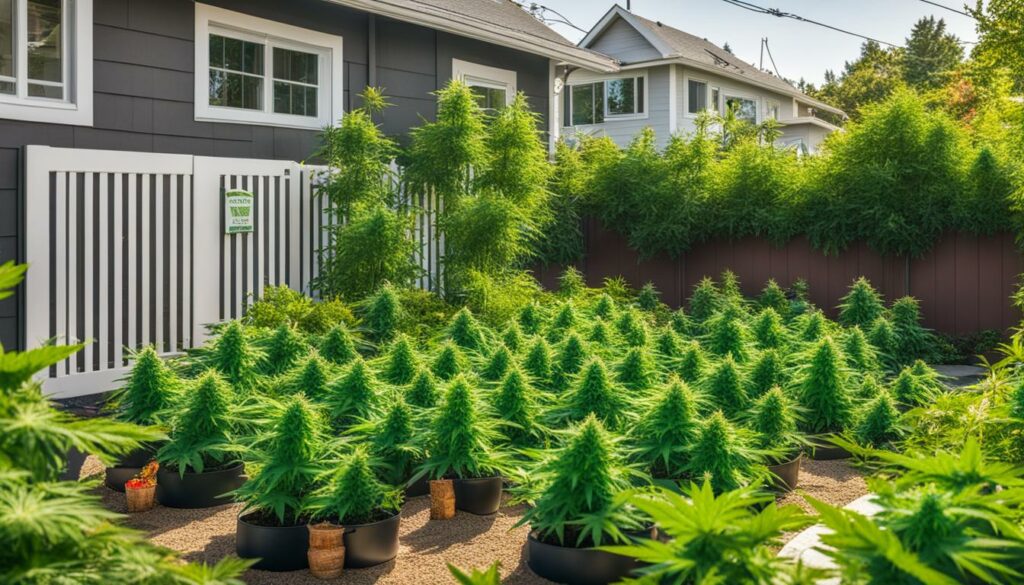
Permit Home Cultivation Limits
| State | Individual Cultivation Limit | Household Cultivation Limit |
|---|---|---|
| State A | 6 plants | 12 plants |
| State B | 4 plants | 8 plants |
| State C | 8 plants | 16 plants |
Indoor vs. Outdoor Cultivation
When it comes to home cannabis cultivation, individuals have the option to choose between indoor and outdoor cultivation methods. The permissibility of these cultivation methods varies by state, with some states allowing both indoor and outdoor grows, while others may have restrictions on either indoor or outdoor cultivation.
Indoor cultivation involves growing cannabis plants indoors, often in controlled environments such as grow tents or dedicated indoor grow rooms. This method provides growers with greater control over environmental factors such as temperature, humidity, and lighting, allowing for year-round cultivation and the ability to grow specific strains.
On the other hand, outdoor cultivation involves growing cannabis plants outdoors, taking advantage of natural sunlight and environmental conditions. This method can be more cost-effective and may result in larger yields due to the unlimited space and access to natural resources. However, it is important to note that outdoor cultivation is subject to weather conditions and may be limited to certain seasons in some regions.
Comparing Indoor and Outdoor Cultivation
To better understand the differences between indoor and outdoor cultivation, let’s explore some key factors:
| Factors | Indoor Cultivation | Outdoor Cultivation |
|---|---|---|
| Control over environmental factors | High | Low |
| Cost of setup | Higher initial investment | Lower initial investment |
| Growth potential | Year-round cultivation | Seasonal cultivation |
| Security | Less visible and more secure | More visible and potentially less secure |
| Strain selection | Greater flexibility | Limited by climate |
Indoor cultivation allows for greater control over the growing environment, but it requires a higher initial investment. Outdoor cultivation, on the other hand, takes advantage of natural resources and can be more cost-effective, but it is subject to seasonal limitations and potential security risks.
Ultimately, the choice between indoor and outdoor cultivation depends on individual preferences, resources, and the specific regulations in their state. It is essential for growers to familiarize themselves with the permissibility of indoor and outdoor cultivation in their region and make an informed decision accordingly.
Compliance and Enforcement of Cannabis Cultivation Laws
Compliance with cannabis cultivation laws is of utmost importance to ensure the legality and success of home cultivation. States have implemented specific regulations to address concerns related to grow security, visibility restrictions, and odor control. By adhering to these regulations, individuals can minimize the risk of legal consequences and maintain a safe and responsible cultivation environment.
Grow Security: State regulations often require home cultivators to implement measures to ensure the security of their cannabis grow. These measures may include keeping the cultivation site locked and secure, using surveillance systems to monitor the grow area, and preventing unauthorized access. Compliance with these security requirements not only helps protect the integrity of the cannabis crop but also helps prevent diversion and unauthorized access.
Visibility Restrictions: To address concerns about the visibility of cannabis plants, some states have implemented restrictions on the cultivation site’s visibility from public areas. These restrictions aim to maintain privacy and prevent the public from easily identifying a home cultivation operation. Compliance with these visibility restrictions may involve measures such as using screens or fencing to shield the cultivation site from view.
Odor Control: The distinct odor of cannabis plants can raise concerns among neighbors and law enforcement. To address these concerns, states may require home cultivators to implement odor control measures. This can involve the use of air filtration systems, carbon filters, or other odor-reducing techniques to minimize the smell emitted from the cultivation area. Compliance with odor control regulations helps maintain a harmonious relationship with the surrounding community.
| Regulation | Description |
|---|---|
| Grow Security | Measures to ensure the security of the cultivation site, such as locked grow areas and surveillance systems. |
| Visibility Restrictions | Requirements to prevent the visibility of the cultivation site from public areas, often involving the use of screens or fencing. |
| Odor Control | Implementing measures to minimize the distinct cannabis odor, such as air filtration systems or carbon filters. |
Related Articles
- What Are the Current Legal Regulations for Growing Cannabis at Home?
- How to Navigate the Legalities of Home Cannabis Cultivation in Your Area?
- What Are the Penalties for Illegal Cannabis Cultivation?
- How to Stay Compliant with Cannabis Cultivation Laws?
- What Are the Legal Limitations for Home Cannabis Growers?
Conclusion
Home cannabis cultivation in the United Kingdom is subject to a range of laws, regulations, and guidelines that vary by state. To ensure legality and compliance, individuals must understand and adhere to these requirements. Familiarizing oneself with the specific regulations in their state is crucial, including limits on plant cultivation, restrictions on cultivation locations, and requirements for security and odor control.
Compliance with cannabis cultivation laws is essential to avoid legal consequences. Individuals should take into account the importance of grow security, such as locked grow sites, to meet the state’s requirements. Visibility restrictions may also be in place to prevent cannabis plants from being visible from public areas. Addressing odor control is another vital aspect to prevent strong cannabis odors from impacting the surrounding environment.
By adhering to these guidelines, individuals can cultivate cannabis at home safely and in accordance with the law. It is important to note that these laws and regulations may change over time, so staying informed and updated on the legal requirements for growing cannabis is essential for all home cultivators.
FAQ
What is home cannabis cultivation?
Home cannabis cultivation refers to the practice of growing cannabis plants for personal use at home.
Is home cannabis cultivation legal in the United Kingdom?
Home cannabis cultivation is illegal in the United Kingdom without a license or permit.
Can I grow cannabis at home for medical purposes?
Currently, medical cannabis patients in the United Kingdom are unable to grow their own cannabis at home.
What are the regulations for home cannabis cultivation in the United States?
Home cannabis cultivation laws vary by state in the United States. It is important to familiarize yourself with the specific regulations in your state.
How many cannabis plants can I grow at home?
The number of cannabis plants allowed for home cultivation varies by state. Check your state’s regulations to determine the limit.
Are there restrictions on where I can cultivate cannabis at home?
Some states have restrictions on cultivating cannabis in certain locations, such as near schools or public areas. Consult your state’s guidelines for more information.
Do I need a permit or license to grow cannabis at home?
Some states require individuals to obtain a permit or license to cultivate cannabis at home. Check your state’s regulations to determine if this is necessary.
Can I grow cannabis indoors or outdoors?
The permissibility of indoor and outdoor cannabis cultivation depends on your state’s regulations. Some states allow both, while others may have restrictions on either indoor or outdoor grows.
What measures do I need to take for compliance with cannabis cultivation laws?
Compliance with cannabis cultivation laws may require measures such as secure cultivation sites, visibility restrictions, and odor control. Consult your state’s guidelines for specific requirements.
How can I ensure I am cultivating cannabis legally?
To ensure you are cultivating cannabis legally, familiarize yourself with your state’s regulations, obtain any necessary permits or licenses, and follow the guidelines and restrictions set forth by your state’s home cultivation program.
Source Links
- https://www.networkforphl.org/wp-content/uploads/2022/11/Regulation-of-Home-Cultivation-in-Adult-Use-States.pdf
- https://www.lmc.org/resources/adult-use-cannabis-what-cities-need-to-know/
- https://cannabisproject.ca/wp-content/uploads/2023/04/Home-cannabis-cultivation-in-the-United-States-and-differences-by-state-level-policy-2019-2020.pdf

